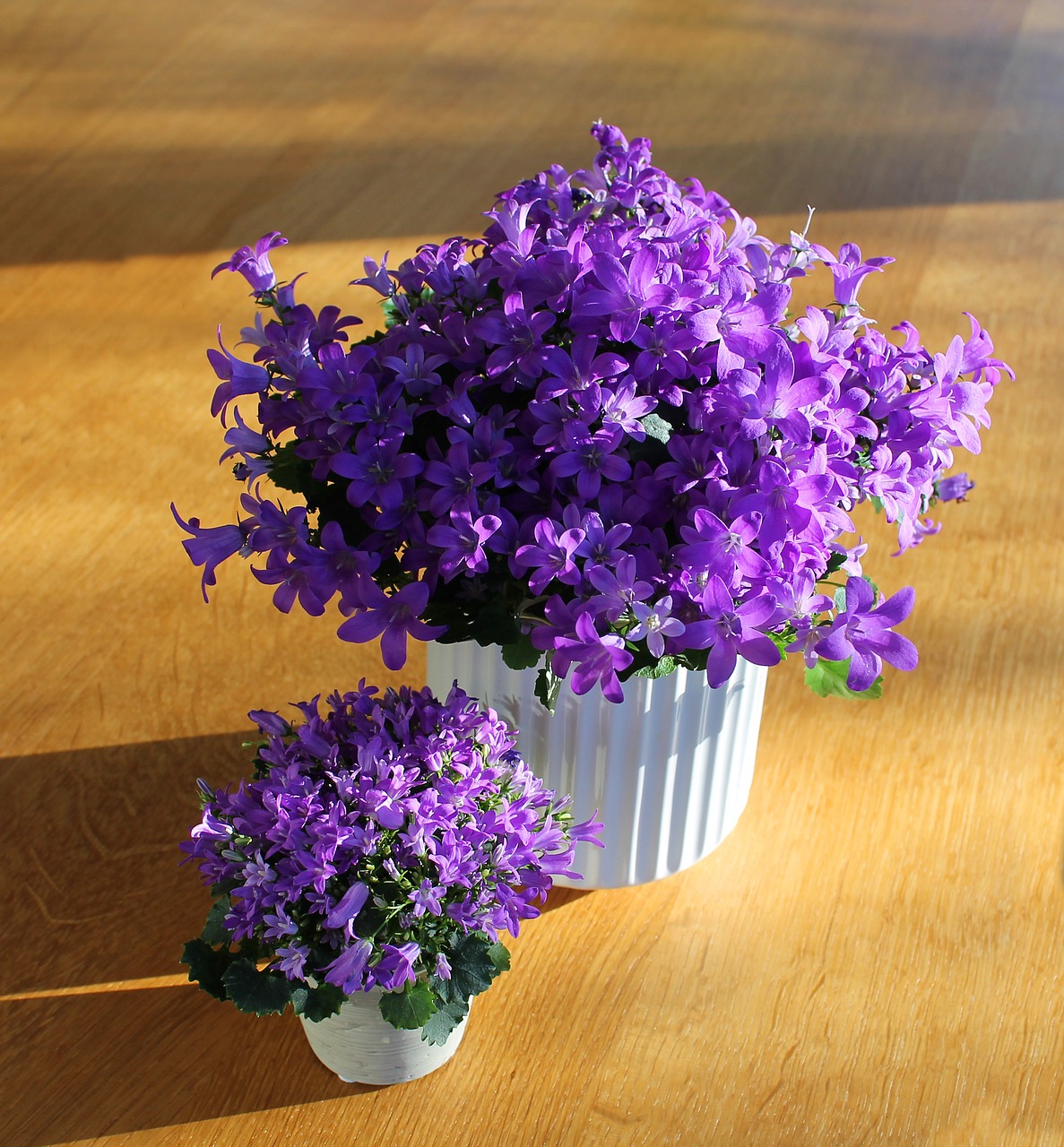As winter approaches, gardeners face the challenge of protecting their beloved plants from the harsh cold and frost. Among these plants are chrysanthemums, commonly known as mums, which add vibrant colors to gardens and outdoor spaces throughout the fall. While mums thrive in the cooler temperatures of autumn, many gardeners wonder if these beautiful flowers can survive the winter in pots.
In this comprehensive guide, we will explore the factors that influence the winter survival of mums in pots, discuss the best practices for their care, and offer tips to ensure your mums come back in full bloom the following spring.
Understanding Chrysanthemums (Mums)
Chrysanthemums, often referred to simply as mums, are popular garden plants known for their stunning and diverse range of colors and shapes. They belong to the Asteraceae family and are native to Asia and northeastern Europe. Mums are cherished for their ability to provide vibrant displays of color in gardens and outdoor spaces, making them a favorite choice for fall decorations and floral arrangements.
There are numerous chrysanthemum varieties available, and they can be categorized into two main groups: garden mums and florist mums. Garden mums are typically hardier and better suited for outdoor planting, making them a popular choice for those who want to enjoy these beautiful flowers in their gardens or in containers on patios and balconies.
Factors Influencing Winter Survival
The ability of mums to survive the winter in pots depends on several key factors. By understanding and addressing these factors, you can significantly increase the chances of your potted mums making it through the cold season successfully.
a. Climate Zone
One of the most critical factors affecting the winter survival of potted mums is your local climate zone. Mums are hardy in USDA Hardiness Zones 5 to 9, although some varieties may withstand colder temperatures with proper care. It’s essential to know your specific climate zone to make informed decisions about overwintering your mums in pots.
b. Variety Selection
Different chrysanthemum varieties have varying levels of cold tolerance. When selecting mums for your pots, consider choosing cold-hardy varieties that are more likely to withstand winter conditions. Some examples of cold-hardy varieties include ‘Sheffield Pink,’ ‘Clara Curtis,’ and ‘Hillside Sheffield Pink.’
c. Pot Size and Material
The size and material of the pot in which you plant your mums can impact their winter survival. Larger pots provide more insulation for the roots, which can help protect them from freezing temperatures. Additionally, pots made of materials like ceramic or concrete offer better insulation than plastic or terracotta pots.
d. Soil Preparation
Well-draining soil is crucial for mums’ winter survival in pots. Ensure that your potting mix is loose and well-aerated to prevent waterlogged roots, which can lead to root rot during the winter months.
e. Location and Sunlight
Proper placement of your potted mums is essential. They should receive ample sunlight during the day, preferably at least 6 hours of direct sunlight. A sunny location helps the plants build up energy reserves, which are crucial for surviving the winter.
f. Watering and Moisture Management
Overwatering can be detrimental to potted mums during the winter. Reduce watering frequency as temperatures drop and ensure that the soil is not consistently moist. Soggy soil can lead to root rot, which is a common issue when overwintering mums in pots.
g. Winter Protection
Providing additional protection to your potted mums during the winter can greatly improve their chances of survival. Mulching the top of the soil with a layer of organic material, such as straw or leaves, can help insulate the roots and prevent them from freezing. Wrapping the pots in bubble wrap or burlap can also offer an extra layer of protection against cold winds.
Overwintering Your Mums
Now that we’ve discussed the factors influencing winter survival, let’s delve into the steps you can take to overwinter your mums in pots successfully.
a. Prune and Prepare
Before the first frost arrives, prune your mums to a height of about 4-6 inches. This encourages compact growth and prevents tall, leggy stems from flopping over during winter. Remove any dead or diseased foliage, as it can harbor pests and diseases over the winter.
b. Insulate the Pot
As temperatures drop, it’s essential to protect the roots of your potted mums from freezing. Consider placing the pots on insulating materials, such as wooden boards or Styrofoam, to create a barrier between the pots and the cold ground. Elevating the pots in this way helps prevent them from getting too cold and can reduce the risk of root damage.
c. Mulch and Cover
After pruning and insulating the pots, mulch the top layer of the soil with a 3-4 inch layer of organic material, such as straw or leaves. This mulch layer acts as insulation, helping to regulate soil temperature and prevent rapid freezing and thawing. Additionally, consider covering the pots with burlap or a frost blanket to shield them from harsh winds and frost.
d. Choose a Sheltered Location
Select a sheltered location for your potted mums during the winter. Placing them against a south-facing wall or in an area where they are shielded from strong winds can provide additional protection from the elements.
e. Monitor Moisture
Throughout the winter, keep an eye on the moisture level of the soil. While you should reduce watering, it’s essential to ensure that the soil doesn’t become bone-dry. If the soil feels overly dry, provide a light watering to keep the roots from dehydrating.
f. Check for Pests and Diseases
During the winter months, periodically inspect your potted mums for signs of pests or diseases. If you notice any issues, take appropriate action to address them promptly. Isolation and treatment with organic pesticides or fungicides may be necessary to prevent the problem from spreading.
Reviving Potted Mums in Spring
Once the frosty days of winter are behind you and spring arrives, it’s time to revive your potted mums and prepare them for the growing season. Follow these steps to ensure your mums come back in full bloom:
a. Remove Winter Coverings and Mulch
As temperatures begin to rise, remove the winter coverings and mulch from your potted mums. This allows the plants to access sunlight and start the growing process.
b. Prune and Shape
Trim any remaining dead or damaged growth from the mums. You can also pinch back the plants to encourage bushier growth and more abundant blooms. Aim to keep the plants compact and balanced.
c. Gradually Increase Watering
As the weather warms up, gradually increase the frequency of watering. Ensure that the soil remains consistently moist but not waterlogged. Overwatering can be just as harmful as underwatering.
d. Fertilize
Once the new growth starts to emerge, apply a balanced, slow-release fertilizer to provide the necessary nutrients for healthy growth and abundant blooms. Follow the manufacturer’s instructions for application rates.
e. Propagation
If your potted mums have become crowded or outgrown their containers, consider dividing and repotting them in the early spring. This process not only rejuvenates the plants but also allows you to multiply your mum collection.
Tips for Success
To help you succeed in overwintering mums in pots, here are some additional tips:
a. Choose the Right Varieties: Select chrysanthemum varieties known for their cold hardiness, and consult local nurseries or gardening experts for recommendations suitable for your region.
b. Use Frost-Resistant Pots: If possible, opt for pots made of materials that resist frost damage, such as ceramic or concrete.
c. Group Pots Together: Clustering your potted mums together can provide them with additional warmth and protection from the cold.
d. Elevate Pots: Use pot feet or wooden blocks to lift the pots slightly off the ground. This prevents water from accumulating under the pots, reducing the risk of root rot.
e. Provide Ventilation: On warmer winter days, remove coverings or burlap to allow air circulation around the plants and prevent humidity buildup.
f. Monitor Weather Forecasts: Stay informed about local weather forecasts and be prepared to provide extra protection if extreme cold or heavy snowfall is expected.
Conclusion
Chrysanthemums, or mums, are versatile and beautiful flowers that can be enjoyed well into the fall season. With proper care and attention, it is possible to overwinter mums in pots and have them return in full bloom the following spring. Understanding the factors that influence their winter survival, preparing them for the colder months, and providing the right care in spring are essential steps for success. By following the tips and guidelines outlined in this comprehensive guide, you can enjoy the vibrant colors of mums in your garden or on your balcony throughout the year, making them a cherished addition to your outdoor spaces.










